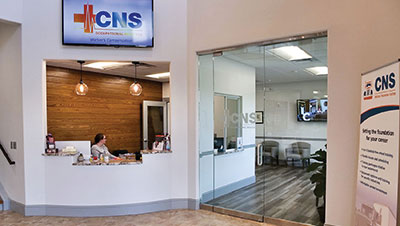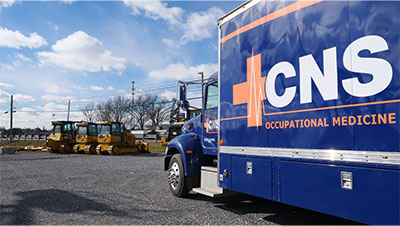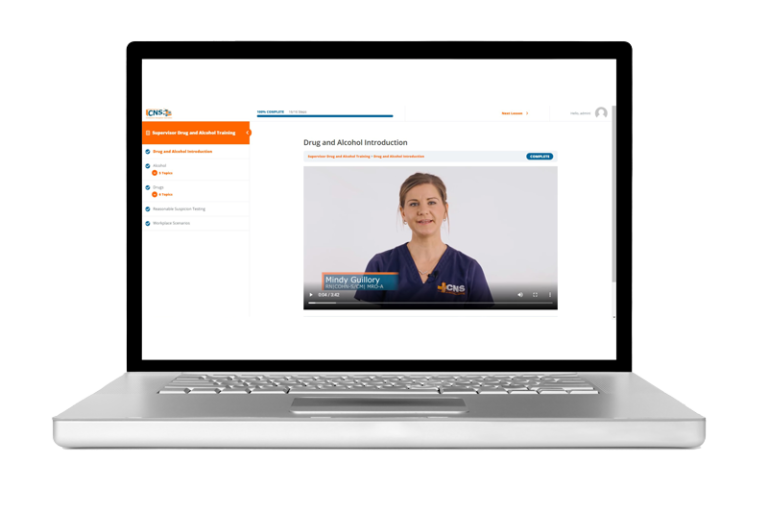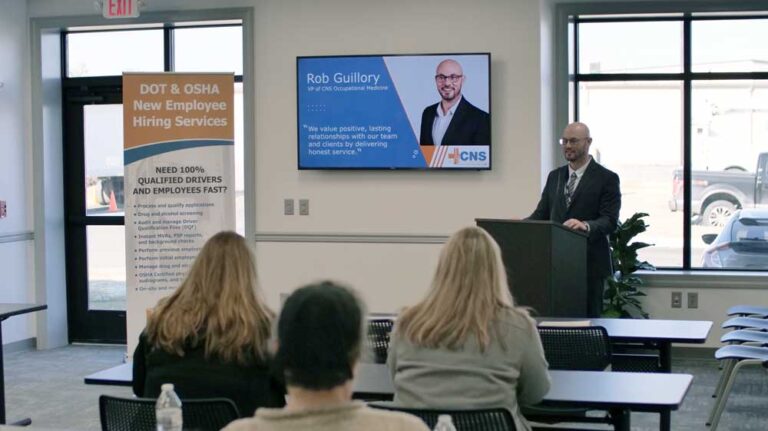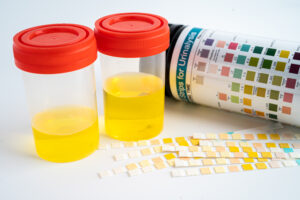In the last 10 years, nearly 80% of states have legalized marijuana for medicinal or recreational use, or both.
Has this caused a massive loss of truckers from our roadways?
Let’s look at the data.
What does the data say?
While we did not know exactly how many truckers were removed from driving due to positive marijuana drug tests before the CDL Clearinghouse, we now know that CDL holders testing positive for THC increased 9.2% from Q1 2022 to Q1 2023 with marijuana the main drug being found.
The Drug & Alcohol Clearinghouse data has also shown us that there is an average of 5,800 drug and alcohol violations every month since February 2020 and has led to an average of 4,800 drivers removed from the roads every month.
While it is easy to say that state legalization is causing driver confusion, if you look at the top five state with heavy and tractor-trailer truck drivers, (according to May 2022 employment data and June 2022 Clearinghouse data compared to May 2022 data), the worst state for drug and alcohol violations per driver is Florida, where recreational marijuana is not yet legal.
California may have legal marijuana, but the violation rate per number of drivers in the state is comparable to Texas (no legalization of any kind) and Pennsylvania.
- Texas: 210,940 drivers, .25% drug and alcohol violations in June 2022 (Marijuana: Not legal)
- California: 186140 drivers, .24 violations (Marijuana: Both legal)
- Florida: 99,490 drivers, .35% violations (Marijuana: Medical)
- Ohio: 91,240 drivers, .17% violations (Marijuana: Medical)
- Pennsylvania: 88,230 drivers, .24% violations (Marijuana: Medical)
So, why the increase in drug testing violations?
There are three main reasons:
- Rise of medical and recreational marijuana legalization
- Driver confusion between CBD and THC with the lack of regulation in CBD industry
- Wider use of other drug testing methods
So, what about that safety picture?
Are the roads safer or are too many good drivers being removed?
Well, it is a little bit of both.
Intoxicating cannabis products, including marijuana, can have a major impact on safety at work and have been proven to slow reaction time, impact memory and impair skills essential to driving.
The reality is that the Clearinghouse database is making the roads safer by stopping one critical issue –drivers that were testing positive or refused a pre-employment drug test were job-hopping so a carrier would not pick up on the violation.
However, we hear about many instances where drivers purchased CBD with “Zero THC” on the bottle and were shocked when they tested positive.
Regardless of why drivers are being removed from the roadways, over 70% of these drivers have yet to start the return-to-duty process.
Marijuana use is not only a challenge for the trucking industry, but also for the overall U.S. workforce, according to a new Quest Diagnostics Drug Testing Index report released in May.
“In 2022, the combined U.S. workforce urine drug positivity for all drugs persisted at 4.6% — the highest level in two decades,” Quest said in a statement. “The 2021 and 2022 positivity rates were the highest since 2001, up more than 30% from an all-time low in 2010-2012.”
As the roads are free from nearly 200,000 drivers at a higher risk of causing an accident due to substance abuse, crashes have increased over the last few years.
So, to answer the safety questions, the roads are not safer, just the potential risk of additional crashes has been reduced.
Unfortunately, this means good drivers are being removed from the roadways.
What can carriers do to prevent loss of good drivers due to positive drug tests?
Until marijuana legalization happens federally, and there is no special exemption to safety-sensitive employees, there are four things companies can do: educate drivers, train managers, review state laws, and update policies.
“This is an ongoing topic among ATA’s Controlled Substances, Driver Health & Wellness Subcommittee, and we discussed at length during our May meeting,” said Dan Horvath, vice president for safety policy with American Trucking Associations. “The group is looking at ways to address the issues, and that includes everything from correcting the misinformation related to controlled substance use, educating drivers, and getting to the root of why we are seeing controlled substance abuse in the first place.”
Educate drivers
There should never be a driver that doesn’t know the realities of CBD products and the potential career ending effects from the products.
Drivers need to be educated on these products and the return-to-duty process if they ever get a positive drug test.
Then, carriers need to educate drivers on the RTD and SAP process as this is the biggest hurdle to get these drivers to begin the process.
Train managers
Managers need to know what to do when an employee defends a positive drug test result due to them using a CBD product.
It is best practice for employers to refrain from acting until they have a conversation with the worker.
Regarding CBD use, there is not necessarily a one size fits all approach. An employer might even decide to make an exception to its drug policy if the person has a disability for which he or she uses CBD oil, particularly if he or she is not impaired on the job.
For companies regulated by the DOT, a Drug and Alcohol Supervisor Training is required, which covers how to deal with the use of and the suspected use of illegal drugs and alcohol.
Ideally, employees should let their workplace know about them using a CBD product for medical purposes by going to a doctor, getting a prescription, and sharing it with the employer. This will help prevent people trying to do the right thing from being penalized.
Employers should work with employment counsel and prepare to be flexible until more CBD rules are in place.
Review state laws
Employers can prohibit the use of marijuana on their premises, even if an employee is legally allowed to use it for medicinal purposes, and job applicants—as well as hired workers–who test positive for THC, can be denied employment, or fired if that is the workplace policy.
But there are some state or jurisdiction exceptions, such as New Jersey, Oklahoma, and New York City.
Reviewing state and city rules is important as there is a possibility that an employee could use an unregulated legally permissible CBD product and trigger a positive test result for THC.
An employer may not know whether the positive result was triggered by CBD oil or marijuana use.
Update policies
To deter CBD use, companies need to forbid CBD products in their policies, despite the legality of their sales.
Then, create a plan to get the drivers back on the road safely by detailing expectations for the RTD and SAP process.
Become a CNS Consortium member today
No matter if you are a single driver operation or have 15+ drivers in your fleet, we treat all our clients equally. Save time, money, and reduce stress by joining today.
Our experts ensure that all DOT rules and regulations are followed, including the implementation of random drug tests for you and your drivers. We take all the necessary steps and precautions to keep you and your drivers compliant with the DOT drug and alcohol testing requirements.
We also offer an online results portal where our consortium clients can order their own chain of custody forms for a drug test, search collection sites near a driver location, see the status of a chain of custody order and the results of the test, and download chain of custody forms for audit or other purposes.
For more information, contact us at 888.260.9448 or info@cnsprotects.com.

